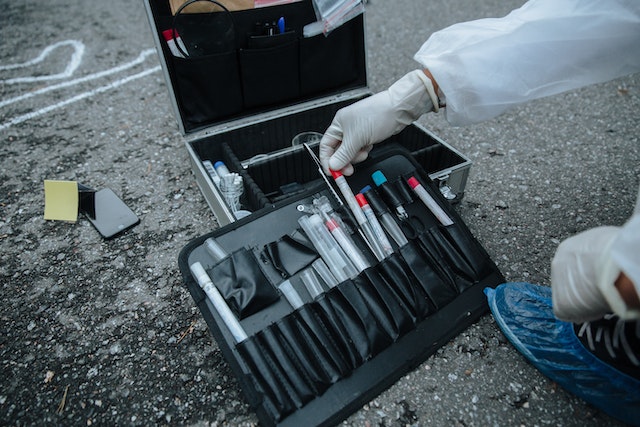Science
India’s Largest Urban Beach is in Knee Deep Froth

Marina Beach of Chennai, a popular beach in India has been knee-deep in frothy, toxic foam for the past few days. Experts have warned that the foam which forms every monsoon season, can cause skin problems. Families with children have been still frequenting the beach. Marina sees tens of thousands of visitors daily and is the largest urban beach in India.
Pravakar Mishra, a scientist at the National Center for Coastal Research in Chennai who has seen the clouds of foam grow in recent years, has said that it is definitely not good for people to go into the foam but they just do not understand the risks. The foam is suspected to be the result of a mixture of washing detergent residue and other waste that gets whipped into a froth by wind and waves during monsoon season.
Only 40 percent of Chennai’s wastewater is treated that means the rest of the sewage from the large city washes right into the sea. Experts have also warned the Fishermen to stay away from the water. One fisherman has pointed out that the value of the fish he catches has dropped to almost nothing.
Pollution of all kind has taken the country by swing. The Air pollution has long been a problem in rapidly-developing India. Now quite frequently the officials have been declaring health emergencies around the country. Recently they declared a public health emergency in New Delhi, the capital of India and a city with more than 20 million residents.
Science
Advances in Forensic Science: Innovations Shaping Criminal Investigations

Forensic science is one of the core foundations of our justice system, providing essential tools to solve crimes and bring perpetrators to justice. With sophisticated techniques, forensic science deciphers hidden clues, interprets complex data, and illuminates connections that can lead to decisive conclusions.
In the current era, innovation fuels this discipline, sparking new methodologies that significantly boost crime detection capabilities. As we witness an accelerating pace of progress, it’s evident that the field of forensic science is not just adapting but indeed evolving, reinforcing its integral role in delivering justice.
Novel Fingerprint Analysis Techniques
Fingerprint analysis, a time-honored method in forensic science, is experiencing a wave of innovation. The advent of advanced technologies has caused a paradigm shift in approaching this age-old technique. It’s not just about matching patterns; fingerprints can reveal new information.
With new tools, forensic scientists can glean insights into the suspect’s lifestyle habits and substance use far beyond identity confirmation. This uncharted territory offers a wealth of additional clues for investigators.
Breakthroughs in DNA Analysis
Delving into DNA analysis, how significantly it has propelled forensic science forward is evident. Next Generation Sequencing, a technique that reads DNA at unprecedented speed and efficiency, has become a critical tool in the forensic arsenal.
Forensic scientists can now dissect even the most challenging DNA samples compromised by time, decay, or environmental factors. Imagine a years-old case, untouched, unsolved, its clues weathered away. DNA analysis shines here, extracting useful information from nearly invisible or degraded samples.
Amid this scientific evolution, professionals with a degree in forensic science are emerging as critical players. Armed with a rigorous academic foundation, they apply these groundbreaking DNA techniques to unsolved cases, unraveling mysteries that once seemed impossible.
Their contributions continue to shape how we understand and utilize DNA analysis in forensic science, giving fresh momentum to criminal investigations.
The Rise of Digital Forensics
Though offering immense convenience, the digital world has opened doors to a new breed of crime – cybercrime. The frequency and complexity of such offenses have created an urgent need for robust and adept digital forensics.
This specialty focuses on the meticulous extraction and evaluation of digital information for use in legal proceedings. Forensic experts dig deep into the digital abyss, unraveling complex webs of information. They retrieve hidden or deleted data, analyze network communications, and trace digital footprints to unmask the perpetrators.
The task isn’t easy. Cybercriminals are increasingly sophisticated, employing new techniques to cloak their illicit activities. But the field of digital forensics is keeping pace. As technologies evolve, so does the art of digital forensics, growing more effective and nuanced in its approach.
Progress in Forensic Anthropology
Forensic anthropology revolves around the study of human skeletal remains, unraveling clues about the deceased. Over time, this field has witnessed dramatic progress, which has enhanced its capabilities and precision.
Today, cutting-edge imaging technologies, such as 3D scanning, have come into play. These offer detailed visualizations of skeletal structures, yielding valuable insights. Advanced statistical techniques have opened up new opportunities to complement these technologies.
Now, with more certainty than ever, we can determine the age, sex, and potential cause of death from skeletal remains. The human body, even in death, tells a tale. It leaves behind an imprint that forensic anthropologists skillfully interpret. This amalgamation of technology and statistics is transforming crime-solving efforts.
Advances in Ballistics Examination
Ballistics examination, integral to many criminal investigations, involves the analysis of bullets and casings to help piece together the narrative of a crime. The recent influx of advanced technologies, like 3D imaging and automated comparison systems, is transforming this domain.
3D imaging, for instance, captures microscopic details of bullets and casings, revealing intricate patterns that were previously hard to decipher. These details can unlock vital clues in criminal investigations, from linking a bullet to its firearm to retracing the trajectory of a shot.
Meanwhile, automated comparison systems expedite the matching process, swiftly scanning databases to find potential matches. With these advancements, ballistics examination is becoming increasingly precise, which amplifies the reliability of its evidence.
Cutting-edge Forensic Toxicology
Forensic toxicology operates at the intersection of law and medicine, detecting and identifying drugs or toxins in the human body. As a pillar of forensic science, its advancements directly impact the field.
The proliferation of new laboratory equipment has catapulted the capabilities of forensic toxicology. For instance, liquid chromatography-mass spectrometry, a technique of impressive sensitivity, has revolutionized substance detection. It can discern incredibly small quantities of substances, transforming droplets of evidence into torrents of insight.
Whether the case involves alleged poisoning or substance misuse, this technique has proven invaluable. These technological breakthroughs are vital contributors to the integrity of evidence presented in legal proceedings.
Microbial Forensics: A New Dawn
Microbial forensics is a relatively nascent discipline that has already sparked much interest and anticipation. This field focuses on investigating the microbiome, a rich community of microbes.
Each individual and location has a unique microbial signature. By studying these signatures, forensic scientists can glean unexpected yet vital insights. The microbes may reveal the identity of a suspect, track a person’s movements, or even provide clues to the cause of death.
The potential of microbial forensics is immense. It’s like a new language that, when decoded, can unveil secrets invisible to the naked eye.
Evolving Legal Implications and Ethical Considerations
As forensic science advances at an impressive pace, it brings along a ripple effect of evolving legal implications and ethical considerations. Legal bodies and ethicists are navigating uncharted waters to address these emerging challenges.
Privacy concerns sit atop the list of issues. Forensic science can now extract personal information from pieces of evidence that, while valuable for investigations, raises questions about data privacy. The potential for misinterpretation of complex scientific evidence is another concern. While offering detailed insights, advanced techniques require specialized knowledge for correct interpretation, highlighting the need for expert witnesses in courtrooms.
Moreover, using probabilistic genotyping algorithms in DNA analysis has sparked debates. These algorithms can help solve cases, but there are concerns over their accuracy and the transparency of their methodology.
Conclusion
Forensic science stands on the brink of a revolutionary era. Rapid advancements in DNA analysis, digital forensics, forensic anthropology, and other domains alter the crime-solving landscape. These innovations, driven by those with a degree in forensic science, enable more accurate, effective investigations.
Yet, they also demand fresh legal and ethical considerations. As we march forward, we must ensure these breakthroughs are leveraged responsibly, optimizing their potential while safeguarding individual rights. The future of criminal investigation hinges on this delicate balance.
-

 Tech3 years ago
Tech3 years agoEffuel Reviews (2021) – Effuel ECO OBD2 Saves Fuel, and Reduce Gas Cost? Effuel Customer Reviews
-

 Tech5 years ago
Tech5 years agoBosch Power Tools India Launches ‘Cordless Matlab Bosch’ Campaign to Demonstrate the Power of Cordless
-

 Lifestyle5 years ago
Lifestyle5 years agoCatholic Cases App brings Church’s Moral Teachings to Androids and iPhones
-

 Lifestyle3 years ago
Lifestyle3 years agoEast Side Hype x Billionaire Boys Club. Hottest New Streetwear Releases in Utah.
-

 Tech5 years ago
Tech5 years agoCloud Buyers & Investors to Profit in the Future
-

 Lifestyle4 years ago
Lifestyle4 years agoThe Midas of Cosmetic Dermatology: Dr. Simon Ourian
-

 Health5 years ago
Health5 years agoCBDistillery Review: Is it a scam?
-

 Entertainment5 years ago
Entertainment5 years agoAvengers Endgame now Available on 123Movies for Download & Streaming for Free
